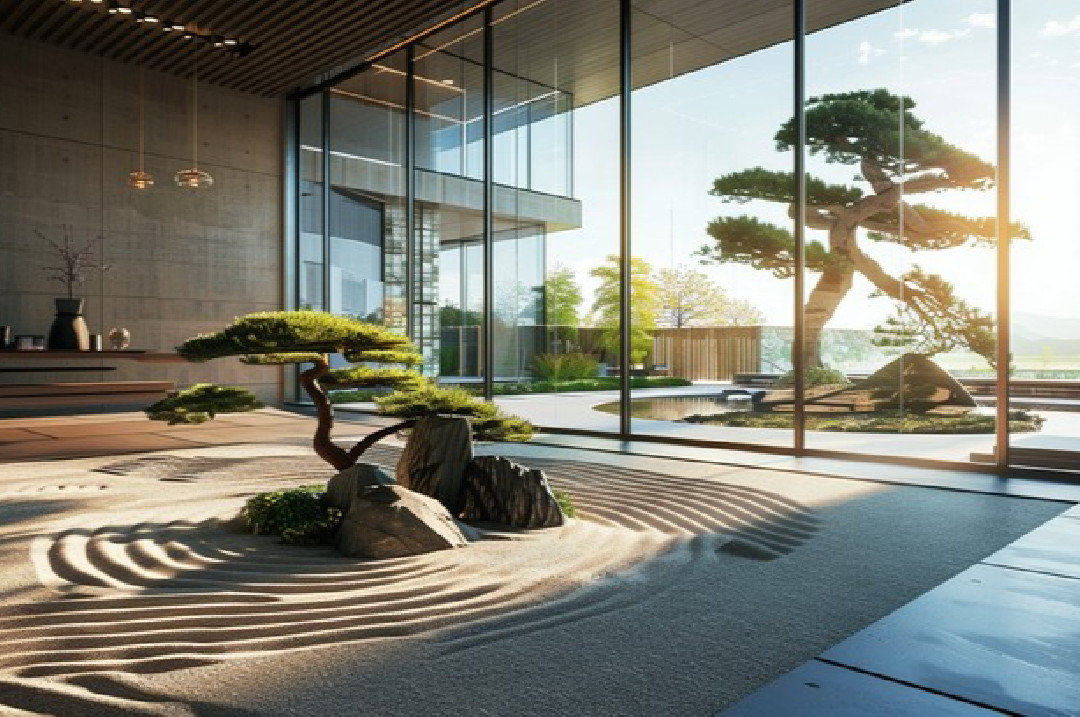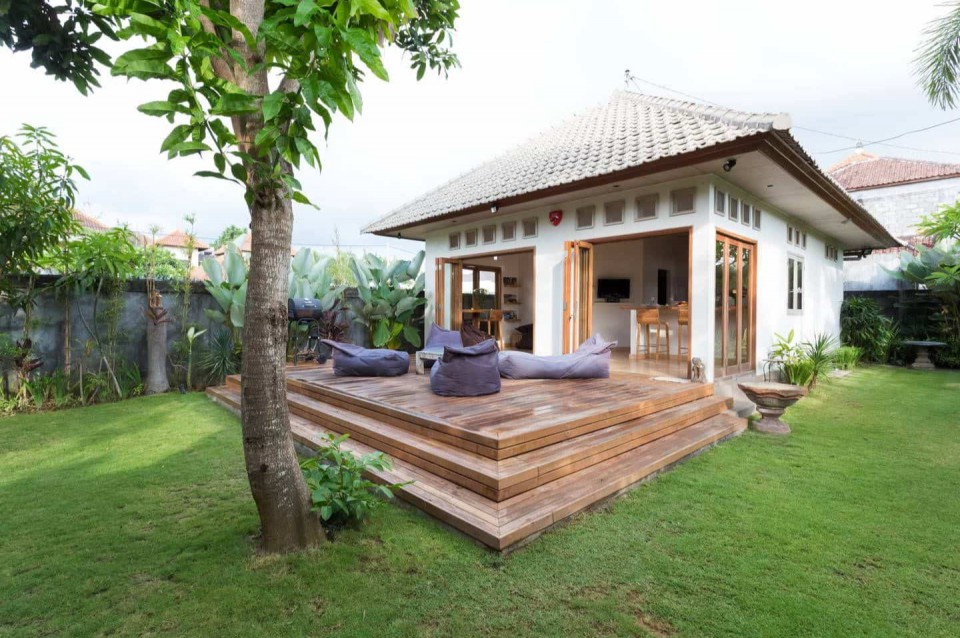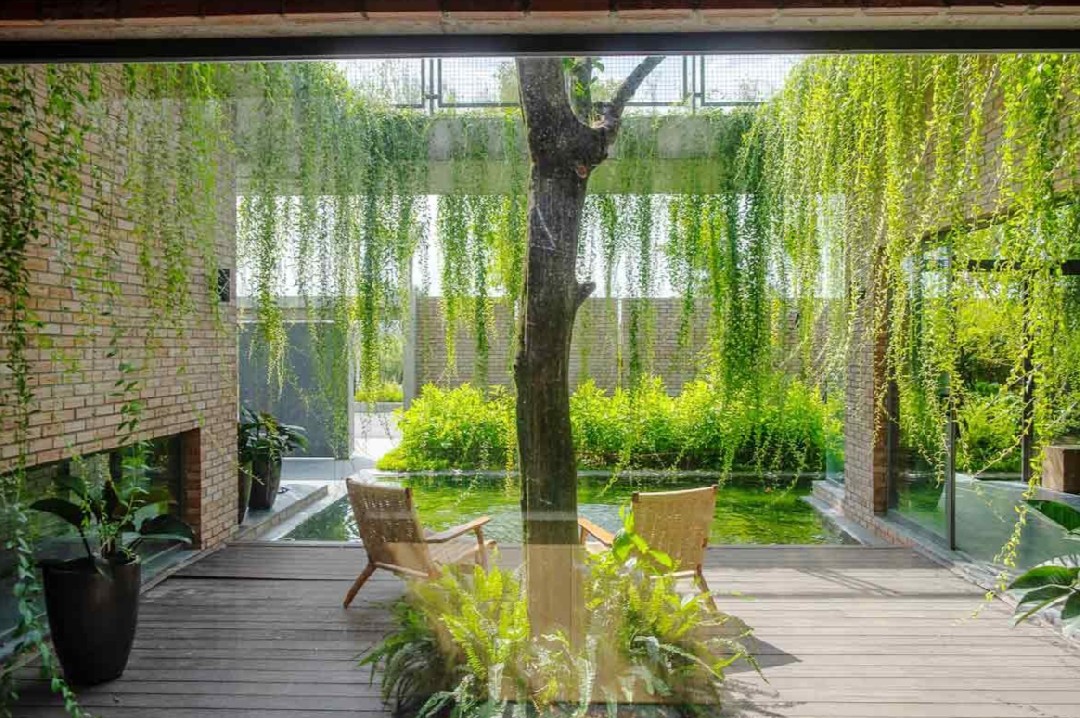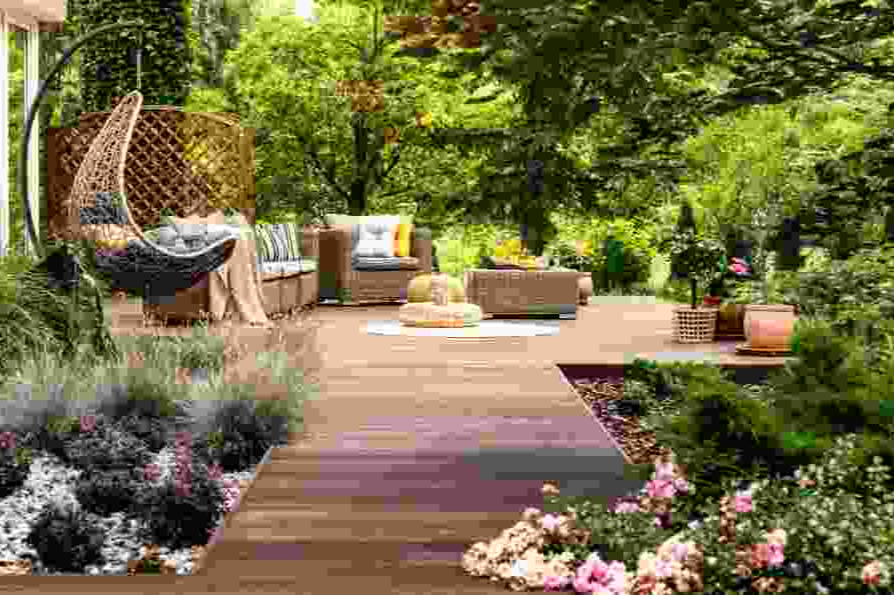Creating a Mini Garden at Home: A Practical and Inspirational Guide for Beginners

Having a garden at home is a dream for many people. Gardens not only beautify the appearance of the house but also provide many benefits, such as:
- Improving air quality: Plants absorb carbon dioxide and release oxygen, helping to improve air quality in your home.
- Providing a green space for relaxation: The garden is an ideal place to relax and de-stress after a day of activity.
- Increasing property value: A house with a beautiful and well-maintained garden has a higher selling value.
- Attracting butterflies and birds: Flowers in the garden will attract butterflies and birds, which can help pollinate plants and make the garden more lively.
- Providing a playground for children: Children can play safely and comfortably in the garden and learn about nature.
However, for beginners, creating a garden at home may seem like a complicated and expensive task. Don't worry! This article will provide a practical and inspirational guide to creating a mini garden in your home easily and affordably.
Step 1: Choose the Right Location

The right location will determine the beauty and success of your garden. Consider the following factors:
- Sunlight: Most plants need enough sunlight for photosynthesis. Choose a location that gets at least 6 hours of sunlight per day.
- Shade: Some plants need shade from the hot sun. You can plant these plants under trees or create artificial shade.
- Wind: A garden exposed to strong winds can damage plants. Choose a location that is sheltered from strong winds.
- Water: Make sure the garden location has easy access to water for watering plants.
- Size: Adjust the size of the garden to the available area. Don't make the garden too big or too small.
- View: Choose a location that has a beautiful view, such as the front yard or back terrace.
Step 2: Choose the Right Plants

Choosing the right plants is essential for creating a beautiful and easy-to-care-for garden. Consider the following factors:
- Type of plant: Choose plants that suit the environmental conditions in your home. Consider plants that are heat tolerant, rain tolerant, or shade tolerant.
- Water needs: Choose plants that have the same water needs so you don't have to water them separately.
- Plant size: Choose plants that are not too big or too small for your garden area. Also consider how the plants will grow and develop in the future.
- Color: Choose plants with different colors to make the garden more beautiful and attractive. You can choose plants with colorful flowers, green leaves, or a combination of both.
- Uses: Choose plants that have certain benefits, such as medicinal plants, herbal plants, or butterfly-attracting plants.
Step 3: Choose a Growing Medium

The right growing medium is essential for plants to grow well and thrive. Choose a growing medium that is loose, porous, and rich in nutrients. You can buy ready-made growing media at plant stores or make your own by mixing soil, sand, and manure.
Step 4: Arranging the Garden

Once you have chosen the location, plants, and growing medium, it's time to arrange your garden. Here are some ideas for arranging a mini garden:
- Minimalist style garden: Use plants with simple and neat shapes, such as cacti, succulents, or ornamental grasses.
- Traditional style garden: Use foliage plants, such as aglaonema, pothos, or ferns.
- Rustic style garden: Use flowering plants, such as jasmine, roses, or orchids.
- Vertical garden: Use hanging pots or plant shelves to grow plants vertically.
- Hydroponic garden: Grow plants without using soil, but with water and nutrients.
Step 5: Caring for the Garden

Proper garden care is essential for keeping plants healthy and beautiful. Here are some tips for caring for a mini garden:
- Water plants regularly: The frequency of watering depends on the type of plant and weather conditions.
- Clear weeds from the garden: Weeds can interfere with plant growth and make the garden look dirty.
- Fertilize plants regularly: Fertilizer helps plants get the nutrients they need to grow well.
- Prune old or wilted plants: Pruning helps plants grow neater and healthier.
- Control plant pests and diseases: Regularly check plants for pests and diseases. Treat pests and diseases promptly with appropriate pesticides or fungicides.
Tips for Saving Money:
- Use recycled materials for plant pots: You can use used cans, plastic bottles, or other recycled materials as plant pots.
- Grow plants from seeds: Growing plants from seeds is cheaper than buying ready-made plants.
- Use organic fertilizers: Organic fertilizers are cheaper and more environmentally friendly than chemical fertilizers.
- Ask for plant seeds from friends or neighbors: You can ask for plant seeds from friends or neighbors who have a garden.
- Make your own garden decorations: You can make your own garden decorations using recycled materials or upcycled materials.
Conclusion:
Creating a mini garden at home doesn't have to be complicated and expensive. By following the guide above, you can create a beautiful and beneficial garden easily and affordably. The mini garden will be an ideal place to relax, enjoy the beauty of nature, and improve your quality of life.
Mini Garden Inspiration:
- Butterfly garden: Plant flowers that attract butterflies, such as lavender, jasmine, and hibiscus.
- Herb garden: Plant herbs that are beneficial for health, such as ginger, turmeric, and aloe vera.
- Vertical garden: Utilize empty walls to grow plants vertically.
- Hydroponic garden: Grow plants without using soil, but with water and nutrients.
- Mini Zen garden: Create a calm and peaceful atmosphere using rocks, sand, and bonsai plants.
Additional Tips:
- Involve the whole family in the process of creating and caring for the garden.
- Use the garden as a learning place for children about nature.
- Use the garden as a place to hold family or friend gatherings.
- Share the beauty of your garden with others through social media.
Hopefully this article is useful for you!








